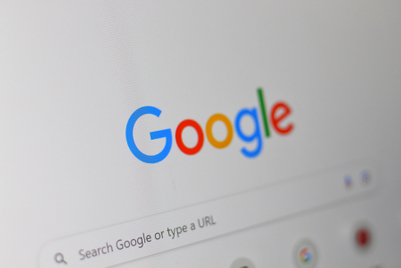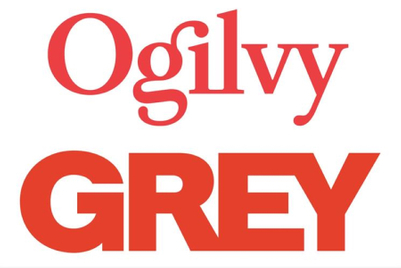
Many businesses seem to have stopped thinking about the future, at least in an effective manner.
Even though I have been working in innovation for many years, the last innovation that I recall shocking me was the introduction of Google Street View in 2007. On one hand, the internet is constantly inundating us with such a wealth of new products and services that it is hard to pay attention. On the other hand, most of them seem to promise only incremental improvements to solutions formulated decades ago.
As the innovation process is now informed by a wealth of data points—sophisticated analytics, big data and AI, top-notch consumer research, to name just a few—businesses have been favouring approaches that guarantee instant validation. They seek shorter and more predictable returns on their investments. This has resulted in a shift of focus toward the very short term of the "measurable" present, rather than the longer term of the unpredictable future.
While a more informed and systematic approach to innovation is advocated, grounding the strategy of a business in the myopic horizon of the short term is less so. According to Credit Suisse, today the average lifespan of an S&P 500 company is under 20 years, down from 60 years in the 1950s. We all remember the annihilation of Blockbuster under the disruptive power of streaming services like Netflix. In a famous meeting in the early 2000s, the CEO of the movie-rental market leader could have bought the startup business for $50 million, but apparently didn't even consider the option.
“The future is here—it's just not evenly distributed.”
—Willian Gibson, author
As we can see from this, and many other unfortunate examples, neglecting the future is not an option for businesses. Having a proactive attitude and trying to influence the future rather than be disrupted has many advantages. Businesses can look at the future to be more prepared when pre-determined conditions manifest themselves (such as the advent of disruptive technologies or global socio-economic trends). They can look at the future to find inspiration for new products or services that might provide them a first-mover advantage. In other cases, it is helpful to think about the future to gain a different perspective on a current strategy—to check how futureproof it is.
How businesses should think about the future
The first step businesses can take to think about the future in a more effective way is to acknowledge its unpredictability and multiplicity. The future is conditioned by a much bigger number of variables than we can keep taking into consideration, or process even with the most powerful computers available to us. The further we gaze, the larger the number of possibilities and the harder the task of prediction.
Through the years futurists have developed several approaches to investigate the future, but one has become the most relevant in the design and innovation debate, thanks to its systematic approach to the many different futures we might want to think about.
“When you fail to prepare, you’re preparing to fail.”
—John Wooden, basketball coach
The 'futures cone' developed by Hancock and Behold in 1994, divides all possible futures into three macro-categories according to their different potential to come into being: probable futures, plausible futures and possible futures.
Different futures and how to approach them
Probable futures are those futures that we think are likely to happen. We believe so because we gathered factual evidence, ideally from multiple sources, that all point in the same direction. The success of Impossible Burger was anticipated by the debate in food technology (the fact we are able to synthetically reproduce the texture and flavour of a hamburger through plant-based substitutes), but also an increasing interest among consumers in moving toward more sustainable and vegetarian diets.
Often, we want to anticipate probable futures through trend analysis. To do so, we interpolate different sources of information (such as fringe behaviours, socio-political trends and cultural values) to identify common patterns and trajectories that might indicate where society is heading in the near future.
Plausible future are those futures we think could happen, but also could not, based on our current understanding of the context. An example of this is a natural calamity. It might not happen, but it is advisable to be prepared to address its consequences. Some businesses, like Shell, have adopted scenario planning in the formulation of their strategy for a long time. This technique encourages us to prepare for what-if scenarios should certain conditions present themselves in the future.
One of the exceptions to the short-termism discussed above is the entertainment industry, which has never stopped exploring the possibilities of the future, especially in genres like science-fiction and dystopian narrative. There are countless examples of the products that we currently use that have been inspired or even imagined before by fiction. AI assistants, computer tablets, and video calls are just a few of the technologies that can be seen in the 1969 Stanley Kubrick film 2001: A Space Odyssey.
“It sounds like a Black Mirror episode.”
—Common pop-culture expression today
When we think about possible futures, that are very unpredictable to us but still in the realm of possibility, fiction offers the most effective method to explore the complexity of human experiences in future contexts. We often know too little about these contexts, or they are too far from us. Scenarios brought to life through narratives or prototypes trigger a human reaction and bring a clearer understanding.
Principles of futuring
To make sense of such complexity and to ground the knowledge into an innovation process is not as simple as picking and matching the different methodologies identified so far. It requires more thorough work using a framework that it is based on the following four principles.
1. Ground the future into human and cultural truths
It is easy to get excited about new technologies. But often our enthusiasm is deceiving. What is the problem we are trying to solve? Is this solution the best way to address it? What is the overall product experience? We all remember what happened to Juicero, the internet-connected juicer that squeezed fruit and vegetables in single-use packs that were only available through a subscription. Instead, always start from the human experience.
2. Lead the future, don’t be resigned to it
You cannot predict the future, but you can play a role in shaping the one you prefer. Embarking on this journey doesn't necessarily lead to success, but the other option, of passively accepting the future unravelling, is way more dangerous. Embarking on this quest can also lead us to new opportunities that are even better than the ones we imagined.
3. Build many futures, do not bet on a single one
Investing all our resources on a single opportunity is equally risky. There are too many variables we cannot control or even imagine that might impact the future more than the ones we took into consideration in our most accurate predictions. Instead, it is advisable to diversify our investment on a wider range of options and then revise our decisions when the trajectories will come to a clearer view.
4. Embrace the unpredictability that futures bring
We need to approach our endeavour with both humility and flexibility if we want to enjoy and make the most of the journey. As imminent futures will come into a clearer view, new ones will peep in. As we gain more clarity on a closer horizon, unimagined possibilities will show up to puzzle us again.
Futuring framework
The more the future is confusing, the more we need to be systematic in our effort by following four consecutive steps.
1. Establish goals and horizon
The first thing is to ask ourselves why we are thinking about the future. For instance, are we seeking inspiration for new product development or do we want to make sure our business is ready for new conditions that might appear on the horizon? Clarifying our goals and timeframe will help us deploy the right methodologies and maximize our efforts.
2. Identify futures
We need to imagine a broader set of distinct futures that can objectively represent the spectrum of possibilities we could encounter. Focusing on too narrow a set of possibilities might limit our chances of having a solid ground for our speculation.
3. Define platforms
Next we need to identify the role of our business for each of the identified futures. What is our role and how can we be successful in that? This will help us define innovation platforms that we can use to initiate our exploration in these unknown territories.
4. Build pathways to the future
Commit an appropriate budget to each platform, and adopt an agile approach to test your hypotheses through explorative projects and business experiments. Be ready to adjust according to your learnings and according to conditions that might have become more evident in the meantime.
Developing a futuring framework to help clients with a more structured approach towards this discipline can often be overwhelming, but a focused approach preserves the enthusiasm towards the possibilities that are unravelled and avoids unnecessary waste of resources that an unstructured approach often leads to.
Dimitri Berti is design strategy lead at Quantum Consumer Solutions.

|
This post is filed under... Cultural Radar: APAC trends impacting brand-building |



.jpg&h=334&w=500&q=100&v=20250320&c=1)

.jpg&h=334&w=500&q=100&v=20250320&c=1)
.jpg&h=334&w=500&q=100&v=20250320&c=1)

.jpg&h=334&w=500&q=100&v=20250320&c=1)
.jpg&h=334&w=500&q=100&v=20250320&c=1)
.jpg&h=334&w=500&q=100&v=20250320&c=1)





.jpg&h=268&w=401&q=100&v=20250320&c=1)


